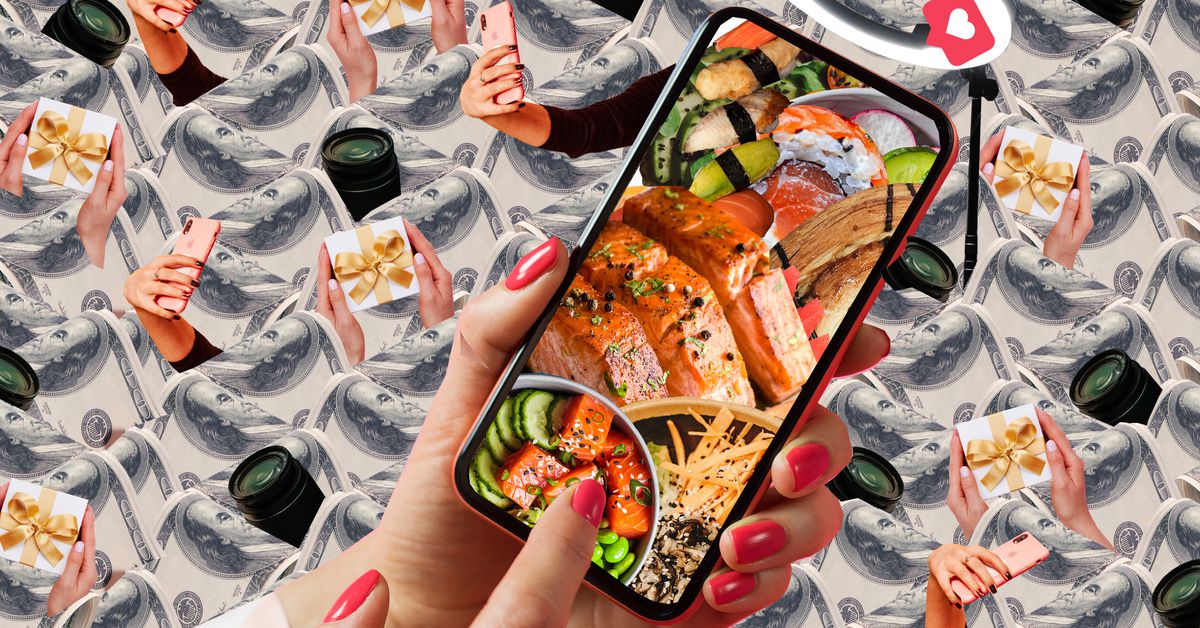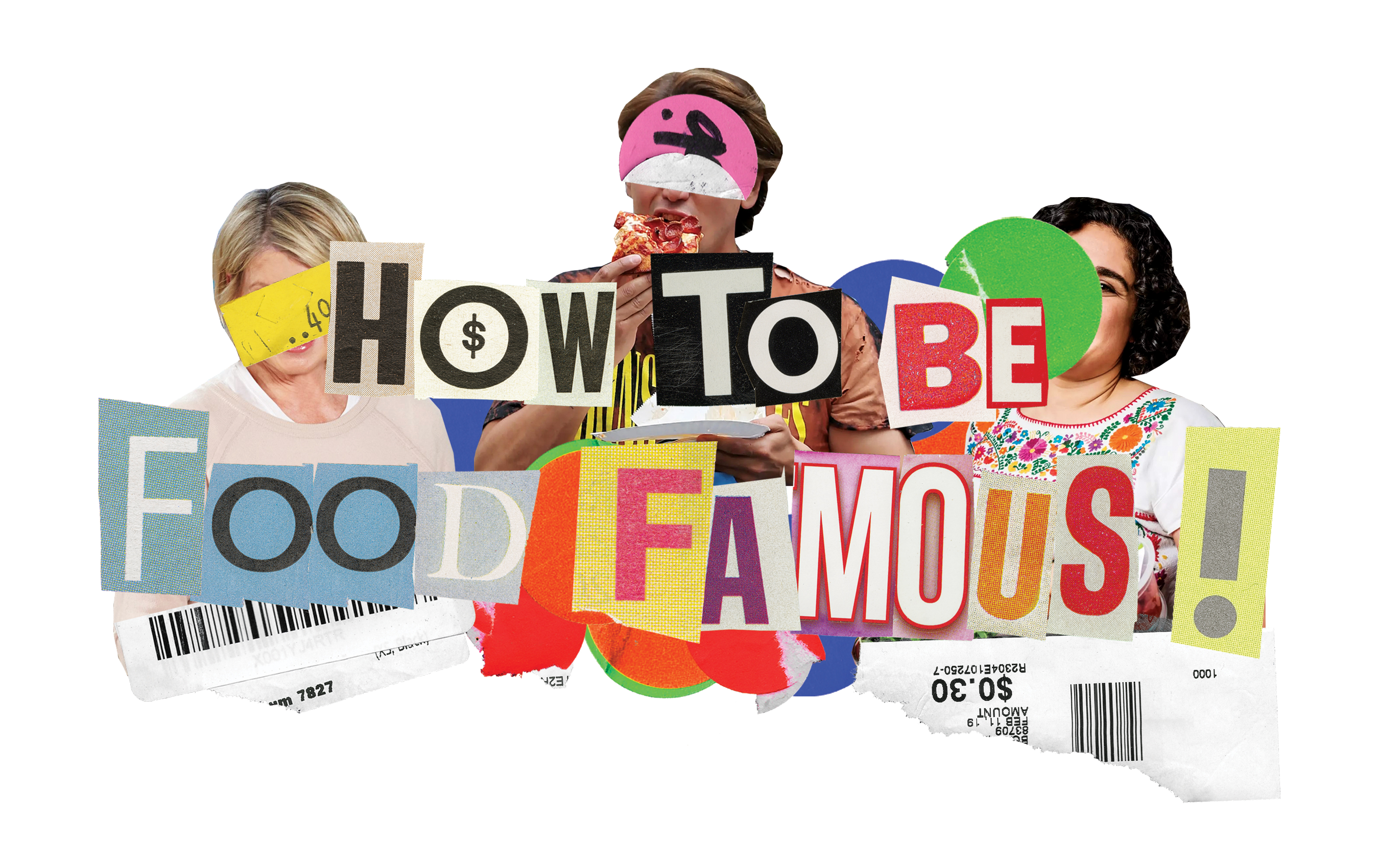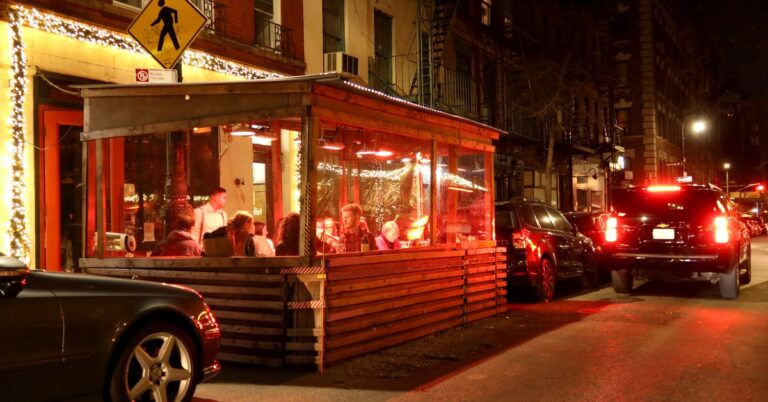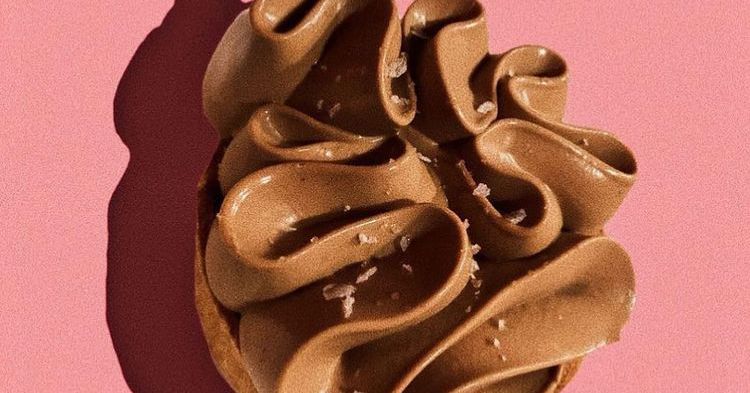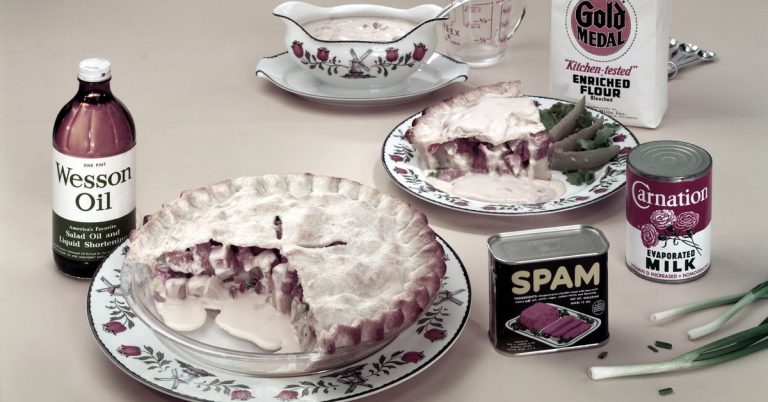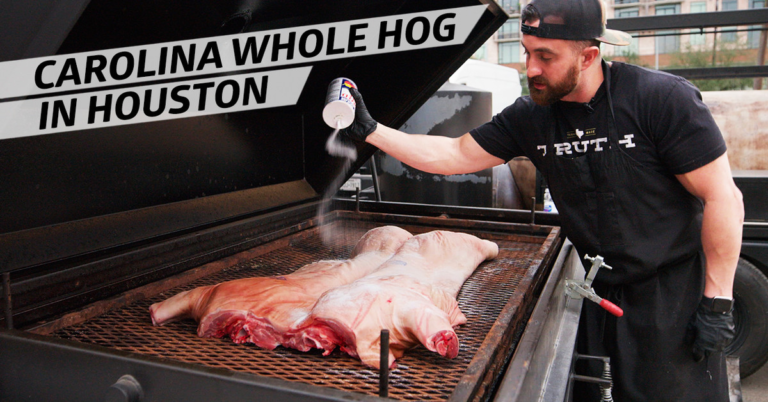The Real Cost of Being a Food Content Creator
The first thing food influencers want you to know is that it’s extremely uncouth to ask about their rates — that is, the amount that brands pay them to advertise. “It’s the number-one question I get asked,” says Tramanh Tran, a 21-year-old influencer who goes by @babydumplingg on TikTok. “I don’t even want to tell my friends because the next time we go to lunch they’ll be like, ‘Oh, you can pay!’ or ‘Why did you make me Venmo you?’ I would never say to someone else, ‘Well, your dad pays for you!’”
It’s easy to scroll through beautiful photos of elaborate ice cream sundaes or lavish brunch spreads on Instagram and think, “Wouldn’t that be nice?” or perhaps even, “Why should they get to make a living off of eating and not me?” And it seems like randos — often without professional cooking experience — are getting paid to do this all over the internet. The spectrum of food influencers runs the gamut from home cooks filming their dishes for TikTok and sharing restaurant pictures and reviews on Instagram to YouTube tutorials and ASMR mukbangs and simply posting straight-up food porn on personal blogs that are then shared and promoted on social media. There are a variety of ways to make money through this kind of influencing; the most popular by far is via brand deals, which function like mini commercials in which the influencer is paid to incorporate or shout out a particular product. (Those Instagram photos hashtagged #ad? They are brand deals.) Some influencers sign with agents or managers, who work like traditional talent agents — connecting people with opportunities and working out contract details like how long a company can use an influencer’s content and how much the influencer will be paid for it. Some strike out on their own, acting as their own business managers.
But the second thing food influencers want you to know is that turning one of the most central elements of human existence — food — into your job gets exhausting quickly. And there’s a lot of competition because there has never been a lower bar of entry to the world of food entertainment. In a post-TikTok, post-pandemic world, all you need is an iPhone, a $15 tripod from Amazon, and something interesting to film — a delicious-looking salmon bowl, a ritzy rigatoni, or just yourself enjoying unlimited sushi at an all-you-can-eat restaurant near your college campus — and there’s a chance you could become a food star overnight.
That’s what happened to Tran in December 2020 at one of said sushi restaurants. She’d joined TikTok only to make silly dance videos with her friends, but when her first video got more than 200,000 views, she started taking her account more seriously: Every time she went out to eat, she made sure to film herself (even when it annoyed her friends), and she continued to post more of the type of content that could go viral. After she had four or five viral hits, the talent agency Gushcloud reached out to sign her, in June 2021, and within six months, she was turning a profit. It’s not enough to support a full-time living, but she feels significantly more comfortable and is able to pay for her day-to-day college expenses.
Noah Swimmer sees this all the time: New food creators rise up from the platform du jour, hoping to turn their large audiences into a career. As a manager at Underscore Talent in Los Angeles, Swimmer represents 16 food creators, from OG recipe bloggers like Catherine McCord of Weelicious to YouTube sensations like Pro Home Cooks’ Mike Greenfield and now TikTokers like Owen Han, a USC student with no professional cooking background who built a following of 1.2 million simply by making sandwiches in his college apartment. When looking for new talent, agencies tend to represent influencers who have a proven track record of engaging and growing audiences, who are working in niche or unique spaces in the already saturated food market, or who demonstrate a talent or ambition to extend beyond a single platform. In return for negotiating better pay and more exposure, agencies will typically take around 10 percent commission.
There are three generations of food influencers, the way Swimmer sees it. The first are the food bloggers of the late aughts, who built loyal readerships by taking beautiful photos of the food they made or ate while sharing snippets of their lives — think Deb Perelman of Smitten Kitchen, Gina Homolka of Skinnytaste, or Bonjwing Lee of the Ulterior Epicure. The second arose from YouTube: home cooks or professional chefs with the know-how (and cash) to produce slickly shot videos of themselves cooking and eating on a level that rivaled the Food Network. It’s the era that made food personalities like Hot Ones’ Sean Evans and Binging With Babish’s Andrew Rea internet superstars. This second generation of food influencers made money via sponsored content (incorporating a product into a video) or through YouTube’s then-extremely lucrative automated ad-roll program.
:no_upscale()/cdn.vox-cdn.com/uploads/chorus_asset/file/23423517/Spot_Final_TheCost__1_.jpg)
TikTok changed everything. What would have taken a personal blog or a YouTube channel years to gain a sturdy audience and national recognition now can happen virtually overnight. This is the third generation of foodie influencer: People, particularly very young ones, build massive followings thanks to a streak of viral videos, and within about six months can expect an onslaught of emails from brands asking them to create sponsored videos.
But learning the ropes of influencerdom takes practice, and the problem about becoming famous very fast is that you don’t necessarily know your worth. “After I had a couple viral videos, HBO reached out and wanted to send me a Game of Thrones gift package, and other brands would give me, like, $200 to post a TikTok about them,” says Tran. “I accepted any brand that offered me money or free food because I was like, ‘That’s so cool!’ Looking back, I was kind of dumb for that.”
Emily Fedner, the 29-year-old brains behind the Instagram account @foodloversdiary, is thankful her career was, as she describes it, “more of a slow burn.” She launched the page in 2013 as a side hobby and didn’t reach the 100,000-followers mark until seven years later. “It wasn’t until the last two years that I started making an actual living doing this,” she says. Before that, she estimates she’d spent tens of thousands of dollars eating at restaurants and buying ingredients — new recipes cost her three to four times the normal amount to account for trial and error — as well as cameras, tripods, and lighting and audio equipment. Then there were the fees for hiring web developers, fees to set up an LLC, which she pays extra for so people can’t see her actual address. (“So that I don’t get stalkers,” she explains. “I’ve dealt with some weird situations.”)
It’s the emotional costs, though, that she’s found most difficult, and not just with the burnout that almost every creator experiences at one point or another. Fedner says that when she first started making real money, she felt an extreme sense of guilt. “Like many other people, I thought it was crazy to hear that influencers can make so much money,” she says. “But something my dad and my older sister told me was, ‘You’re paying yourself back for the last decade.’ I made no money and invested money, time, blood, sweat, and tears into building this. That’s a big misconception about influencers.”
Fedner, too, is frustrated by the expectation that influencers owe their followers financial transparency. “I’m grateful that money conversations and equal pay have become more transparent, but I do find it funny that people feel entitled to know what influencers make. What if I came up to a random accountant and was like, ‘How much is in your bank account? What’s your salary?’ It’s a loaded question because the assumption is, ‘Oh, my God, I can’t believe it’s worth that much!’ Because it is worth that much.”
There are other unexpected costs. “The most expensive part isn’t the butter or the sugar; it’s the time,” says Mia Starr, a 26-year-old cake decorator with more than 210,000 followers on TikTok. “It’s doing a ton of work for free, consistently, until an opportunity comes along.” Most major TikTokers post at the absolute least once per day, and nearly all recommend posting as much as possible to appeal to the mysterious and ever-changing algorithm or risk being a one-hit wonder. Starr has considered starting a channel on YouTube, where the videos tend to be longer and the deals can be more lucrative, but, she says, “the expectations for the production value are much higher.” Currently, she bakes about two cakes per week in her apartment, films herself decorating them in her bedroom, and shares them with her roommates and friends.
“There’s a paradigm shift,” says Swimmer. “It used to be that the goal was to transition someone from the digital space into a TV celebrity chef on one of the channels like Discovery or the Food Network. Now I think creators are finding that it’s actually more important to have control over their business and growth versus at the whims of studio executives.”
Rachel Fong, who started her popular YouTube baking channel Kawaii Sweet World in 2010 when she was just 12 years old, hopes to help fellow creators do just that. She’s in the process of launching a startup called Creator Labs; it connects food influencers to factories that make products influencers can then license and sell directly to their followers. Inspiration struck as she was trying to create a line of bakeware. “If you do a custom product, it’s going to cost you at least $20,000 in upfront fees just for inventory. I found the process difficult,” she says. Her ultimate goal is to help creators build a source of passive income that doesn’t rely on churning out as much content as possible.
Other influencers are thinking more broadly about their careers in the food world and turning to IRL ventures. Fedner, for instance, is now the co-founder of a pasta pop-up operating inside the longtime West Village Italian joint Raffetto’s. Which, of course, didn’t come without costs. “At one point when I was trying to launch the pasta pop-up, I was a server working five nights a week while trying to build @foodloversdiary. There was a lot of personal cost to my social life,” she says.
For most influencers, food or otherwise, brand deals are their main source of income, but nearly all monetize their followings in several ways at once, be it through paywalled platforms like Patreon or Substack, selling merch, or launching side businesses. That means being a content creator can add up to multiple full-time jobs. “It’s a dream job for me — I work my own hours and get to cook what I want, and I enjoy the editing process,” says Han, the sandwich influencer. “With that being said, there’s a downside: You work 24/7. I’m constantly thinking about what I’m going to be making next. I haven’t cooked for fun in such a long time because every time I make a dish, it’s an opportunity for a video. There’s literally no days off.”
Fong’s advice for hopeful food influencers: “Always get started in the easiest way possible. People ask me what DSLR or lighting kit to buy, and my advice is don’t worry about that yet. Just try! And see if you like it!” Becoming an online food person, then, isn’t so different from trying a new dish: After a bite or two, you’ll know whether it was worth the money.
Rebecca Jennings is a senior correspondent at The Goods by Vox, where she covers social media platforms, influencers, and the creator economy. She writes a weekly newsletter column about what’s new in the world of internet culture and lives in Brooklyn.
Marylu E. Herrera is a Chicago-based artist with a focus on print media and collage.
Fact checked by Kelsey Lannin
Copy edited by Leilah Bernstein
